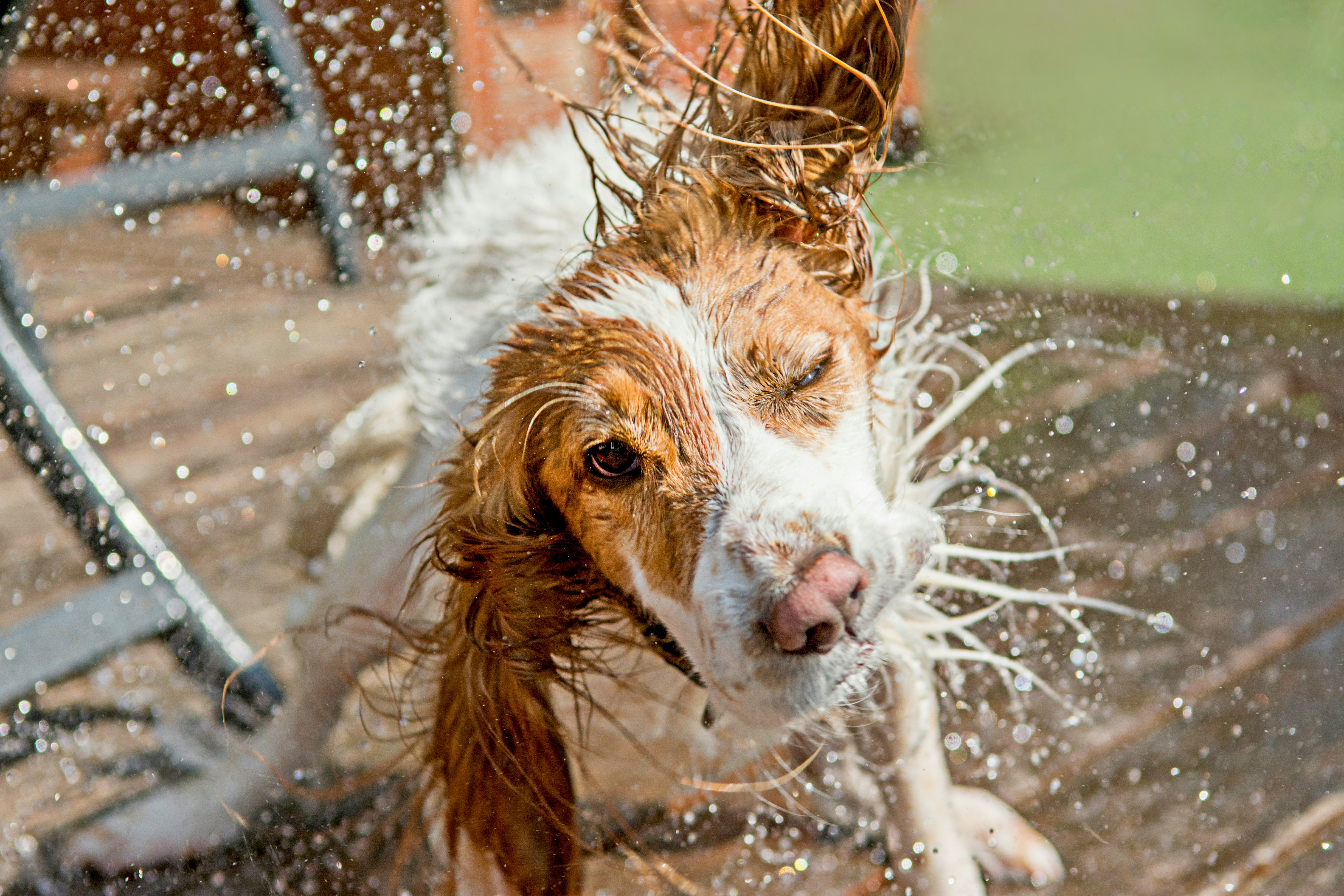
I hate drying my hair. I don’t have the patience to stand in front of the mirror and methodically dry my hair, section by section. And honestly, I don’t mind looking like a wet dog for 20 minutes after a shower. As you might imagine, this aversion means that, as a teenager, adults regularly warned me that I would “catch my death of cold” if I spent too much time with wet locks in the chilly air.
Objectively, we know that viruses cause colds and that going outside with wet hair doesn’t somehow attract a cold virus. So why is this such a persistent myth?
Can going outside with wet hair make you sick?
Diane Pappas, a professor of pediatrics at the University of Virginia School of Medicine, has researched the common cold and is unequivocal about this: “Colds are caused by viruses and are not caused by going outside with wet hair,” she tells Inverse. “I do not know where the myth came from; maybe it has something to do with the fact that colds are more prevalent during the fall and winter months (approximately September through March) when temperatures are lower.”
Viruses indeed spread more easily in cold air; it’s one of the reasons fall and winter are when we see a surge of cold and flu infections. Some research has suggested that a lack of Vitamin D — which we get from the sun, weather permitting — makes us more susceptible to viruses by weakening our immune system. Additionally, when it’s cold outside, we spend more time indoors, close to other people. As we’re all too aware in the Covid-19 era: Being indoors and in close contact is a recipe for virus transmission.

However, none of those factors are specific to people who go outside with wet hair. They’re just things that tend to happen in the fall and winter.
A thin link between wet hair and symptom onset
Going outside with wet hair won’t magically infect you with a virus, but some limited research may indicate that if you are already infected with a virus, quickly cooling your body down — as would happen if someone went outside with wet hair —may trigger symptom onset.
A 2005 study published in the journal Family Medicine offers some evidence for this association.
The researchers split 180 participants into two groups: one group would have to plunge one of their feet into cold water, and the other served as a control. Four to five days following the cold plunge, participants in the chilly feet group were twice as likely to report cold symptoms than those in the control group. (Whether or not they truly had a cold was not empirically tested through virology.)
The authors explain that chilling the body quickly by sticking one’s feet in cold water constricts the blood vessels in the upper airway.
“The vasoconstriction of the upper airways has been proposed as a mechanism that reduces respiratory defence against infection,” the researchers write.
Importantly though, while the participants who did have cold symptoms after the experiment believed their freezing feet caused the cold symptoms, the authors didn’t come to the same conclusions.
They write:
When common cold viruses are circulating in the community a proportion of subjects will have sub-clinical infections, and chilling of these subjects may cause vasoconstriction in the upper airway epithelium and conversion of a sub-clinical to a clinical infection. In these cases the subject links the causality of the common cold symptoms to the chill and does not realise that they were already infected before they ‘caught’ a cold.
Pappas has researched the common cold for over a decade and is unpersuaded, saying the theory isn’t consistent with her understanding.
Other research calls the hypothesis into question. In 1968, scientists at Baylor University conducted a similar experiment which was later published in the New England Journal of Medicine. The researchers exposed 44 participants to the common cold and then split them into two groups: One group had to stand in a cold room, and the other participants hung out in a more comfortably heated room. Ultimately, the researchers found no significant difference between the two groups in either likelihood of infection or symptom severity.

When two people infected with the cold at the same time develop symptoms at different times, there’s probably a different explanation, Pappas says.
“The incubation period [of the cold] is 24-72 hours, but host factors and different virus types can contribute to variation in symptom onset,” she says. Further, Pappas adds, some people will be asymptomatic after being infected because of the defensive responses of the respiratory epithelium.”
The link between wet hair and other kinds of infection
While your wet hair probably isn’t responsible for your cold, it may be responsible for other kinds of infections. The Mayo Clinic notes that sleeping with wet hair can increase your risk of infection. Fungi and bacteria flourish in moist, warm environments. If you go to bed with wet hair, you’re creating an ideal environment for these unwelcome freeloaders.
When you lay your dripping locks against the pillow and sheets, any fungi or bacteria that may have found their way onto your body have a wet and warm environment in which to thrive. The Mayo Clinic says this most often leads to three kinds of infections.
- A mold commonly found on pillows, aspergillosis, can fester in the dampness caused by wet hair.
- A buildup of yeast in the hair follicle can cause Malassezia folliculitis; sweating worsens the infection. It can also cause dandruff or scalp dermatitis.
- Scalp ringworm gets its name from the itchy, red, ring-shaped rash this fungal infection causes. It is highly contagious.
How to protect yourself from the common cold
Your blow dryer may not prevent you from contracting a cold or other virus this winter, but there are things you can do to reduce your risk. Pappas explains that colds are frequently transferred from touching people or objects with the cold virus and then touching our eyes or nose. Frequent hand washing and avoiding touching your nose and eyes will help prevent infection, as will coughing into your elbow or a tissue, disinfecting surfaces, and avoiding close contact with people who are sick.
And if you did come down with a cold, staying home while you are symptomatic will prevent others from catching it. During pandemic restrictions, cold infections decreased because of prevention measures like social distancing and masking.
Pappas notes a few other cold facts she wishes people understood:
- There is no cure for the common cold.
- Antibiotics do not treat the common cold. Antibiotics can kill bacteria but typically aren’t effective against viruses, which cause colds.
- Yellow-green nasal discharge does not mean that you have developed a bacterial sinus infection; it occurs normally during the course of a cold.
- Colds can last for up to two weeks in children.
- No over-the-counter cough and cold medicines are proven effective in treating common cold symptoms in children and may cause side effects.
- Young children average six to eight colds per year.
So despite what your mother may have said, going outside with wet hair isn’t going to give you a cold — being lax about hygiene might. Wash your hands.







